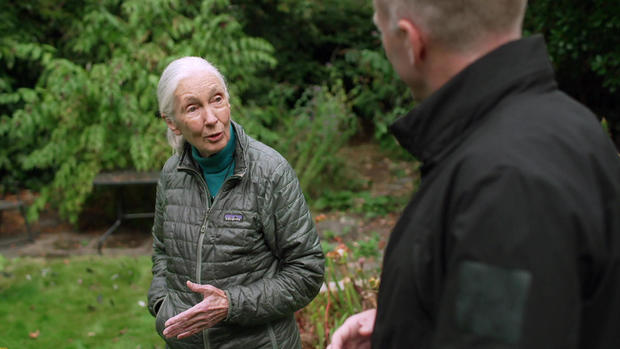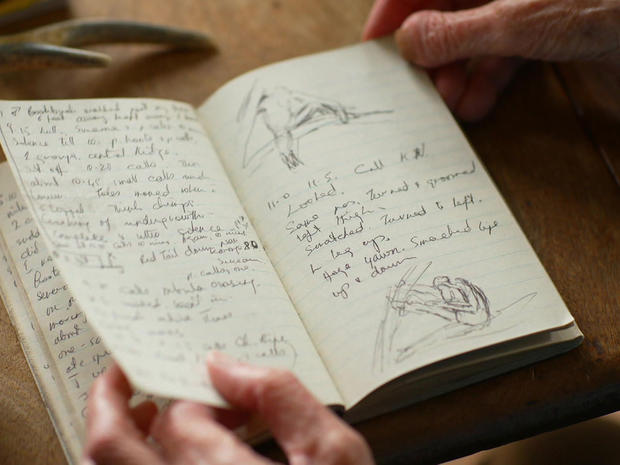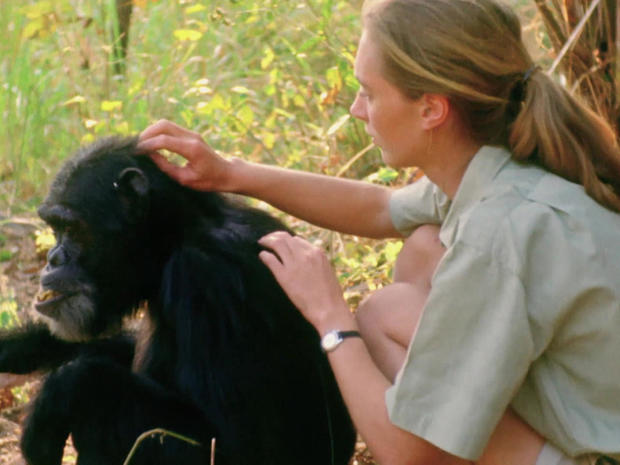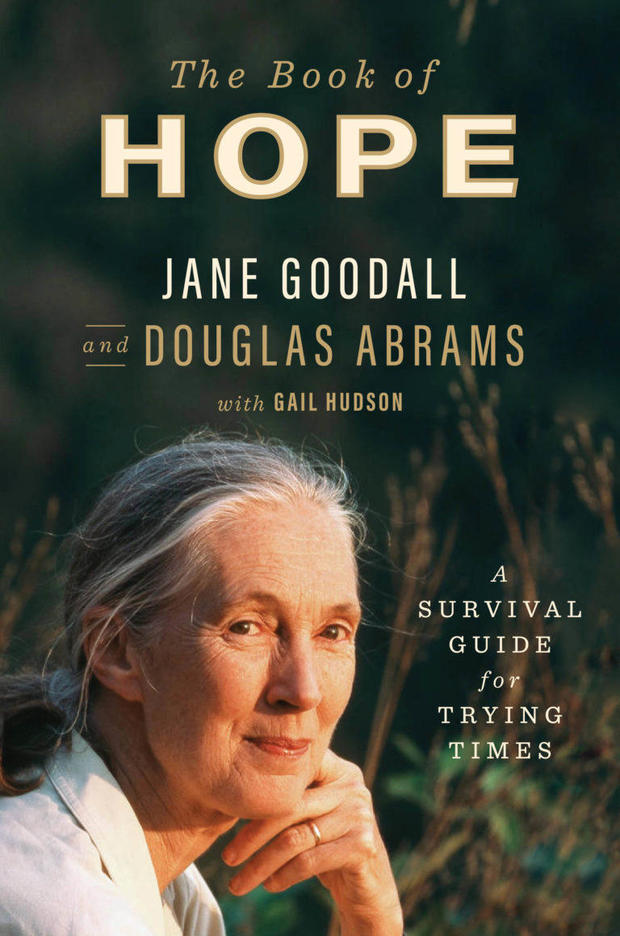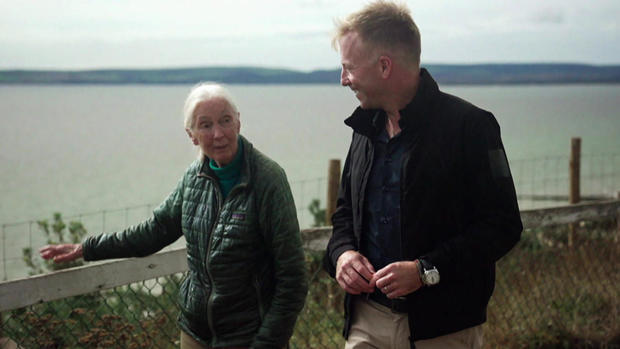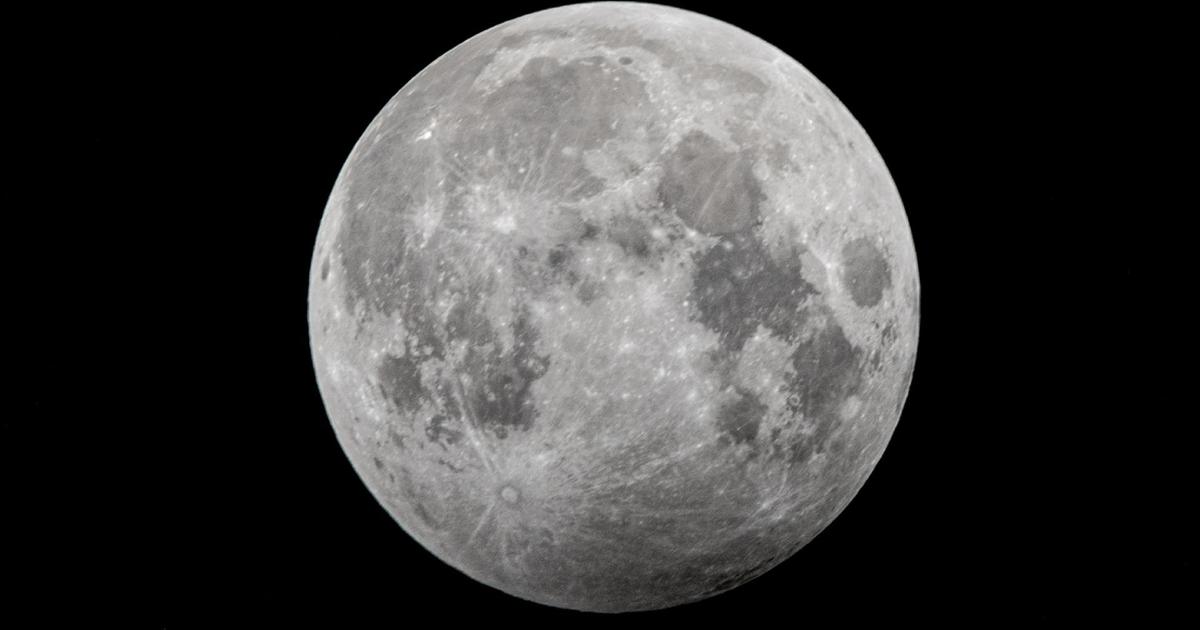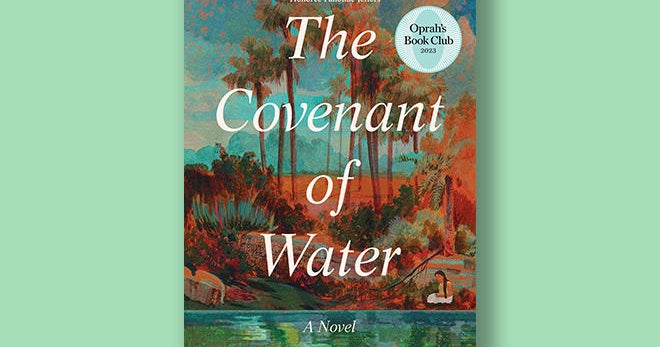Jane Goodall on her hope for the future
It's how you might imagine Jane Goodall to be: Correspondent Seth Doane and camera crew had just met and were setting up at her childhood home in Bournemouth, England, but the famed naturalist was more focused on a visit from a robin, and a bee.
She first learned about the bees – and, yes, the birds – here. "You grew up looking out on this garden dreaming of another world?" asked Doane.
"Yeah, I did."
And she found it in the Gombe rain forest of Tanzania, where her groundbreaking work studying chimpanzees in the 1960s made her a National Geographic "cover girl." At age 87, she can still be found on the front of magazines, and running a conservation empire. Her Jane Goodall Institute, dedicated to protecting wildlife and the environment, has chapters in two-dozen countries; and there's Roots & Shoots, a program to engage youth around the world.
Goodall's own fascination with animals started when she was a kid, spending hours in a tree with library books: "I read Tarzan up there," she said. "There was no TV back then. That's when my dream began. I'll go to Africa, live with animals, write books about them. That was it. No intention of being a scientist, because girls didn't do that sort of thing."
She started as a secretary, then landed a job as an assistant to paleoanthropologist Louis Leakey. He was on the lookout for a "fresh pair of eyes and fiery spirit": "I clearly was passionate," Goodall said. "I clearly had an understanding of animals. And he felt that women might be better in the field, that we might be more patient. Also, he wanted somebody who hadn't been to college, so he wanted an unbiased mind."
Leakey raised money for Goodall to spend six months in the jungle studying chimpanzees in Tanzania. Little was known about them at the time. Goodall filled stacks of journals with notes.
"I transcribed these every night," she said.
"Wow, look at this, '37, 38, 39, 40 …' Every minute you were noting the behaviors of some animal."
"Yes, and shorthand, like 'F' would be 'Feed.'"
Crucially, she witnessed the chimps fashioning and using tools – something believed, until then, was unique to humans.
Doane asked, "Did you realize that what you were seeing was so extraordinary?"
"I knew that it was going to make a huge impact," Goodall said. "In fact, a lot of people refused to believe it. Why should they believe this young girl? She hadn't even been to college!"
But editors at National Geographic were intrigued. "They sent a photographer, cameraman Hugo van Lawick, and when his film started doing the rounds, showing the chimps using little twigs to fish for termites, they had to believe."
"There was a directive from National Geographic to not only focus on the chimpanzees, but for Hugo to focus on you," asked Doane. "Did that bother you?"
"Well, it was frustrating," she replied, "but, you know, 'Oh Jane, you know, I want you washing your hair – oh, could you wash it again? I couldn't get the light right …'"
In an August 1963 article, National Geographic captioned one photo, "In a wilderness boudoir Miss Goodall lathers her blond hair with water pure enough to drink." Goodall said, "It put me in a limelight that I did not want. But then, there was all of this press about, 'Oh, she's only got money from the Geographic because she's got nice legs and things.'"
"Did you feel objectified?" asked Doane.
"It was just a different world. And so, well, if it's my legs, truly, that have helped me get money to study the chimps, thank you, legs!" she laughed.
That photographer became her husband, and they had a son together. And in her decades-long study, those chimps also became much more to her. She showed Doane portraits of some of the chimps: Ollie, Flo with little Flint, and "grumpy old J.B."
"It's almost like you're showing me family photos," Doane said.
"Yeah. I know."
Chimpanzees share 99% of humans' DNA. The difference, Goodall points out, is the development of our intellect. "Which makes it utterly absurd that this most intellectual of all creatures on the planet is destroying its only home," she noted.
"That's your mission now?"
"Yes. The effects of climate change, the hurricanes, the typhoons, the flooding, the fires. So, the key important thing is to give people hope that we can get through, because if you don't have hope, why bother?"
She's written a new book on hope, and calls it "a survival guide for trying times." It's part of her race to reach as many people as possible.
"This planet, it doesn't have infinite natural resources; they are finite. They can come to an end.
So, what's going to happen if we carry on with business-as-usual?"
Pre-pandemic, Goodall said, she was on the road 300 days a year. Now, she lectures and holds meetings from her room in the attic – "Virtual Jane," as she calls herself.
Doane asked, "Do you want to be this busy?"
"No."
"Really?"
"No."
"Why do you do it?"
"Because there's a message to get out," Goodall said, "and I'm getting older, and there's less time left ahead of me, and the world's falling to pieces."
"You feel this urgency?" asked Doane.
"Yes, I do."
It means a lot of talking; whiskey, she said, soothes her vocal cords. A daily walk sorts pretty much everything else. "Don't want to turn into a couch potato," she said. "You can't just sit all day. It's ridiculous."
"I can't imagine that you've ever sat all day," Doane suggested.
"Um, not really, no. "
Here, along the English Channel, it's again clear she's drawn to the natural world. But protecting that means shifting her attention: "So, now I have to speak to bankers and lawyers and CEOs and politicians."
"What do you say?"
"I tell them stories and try to reach the heart. People have to change from within."
And that change, Goodall said, can start small: "Everybody can do something. I mean, when you go shopping you can ask yourself, 'Hmm, did this product harm the environment when it was made? Was it cruel to animals? Is it cheap? Why is it cheap? Is it cheap because of unfair wages?"
Doane said, "You're asking people to do a lot."
"Well, why not? If they care about the future, especially if they've got children, you don't have to do it all. You know, even if you just pick one thing, like eating less meat. Just do something."
READ AN EXCERPT: "The Book of Hope: A Survival Guide for Trying Times"
For more info:
- Jane Goodall Institute
- Roots & Shoots – United States
- "The Book of Hope: A Survival Guide for Trying Times" by Jane Goodall and Douglas Abrams with Gail Hudson (Celadon), in Hardcover, eBook and Audio formats, available via Amazon and Indiebound
Story produced by Mikaela Bufano. Editor: Brian Robbins.
